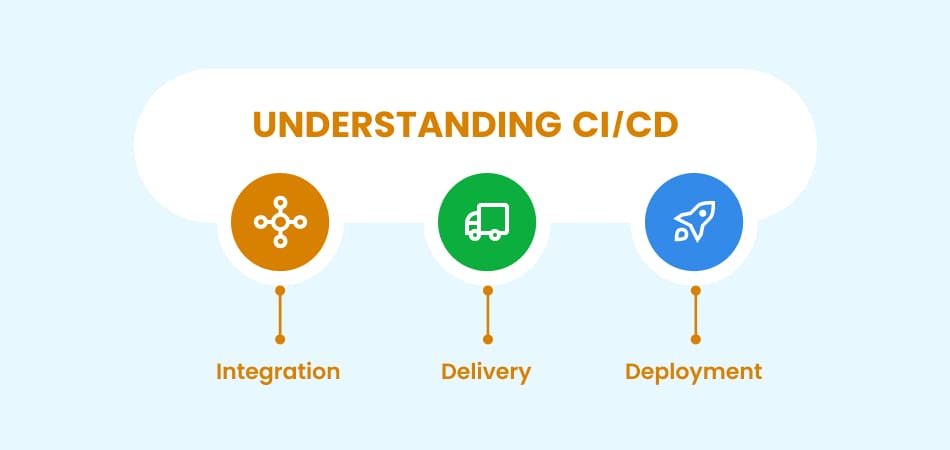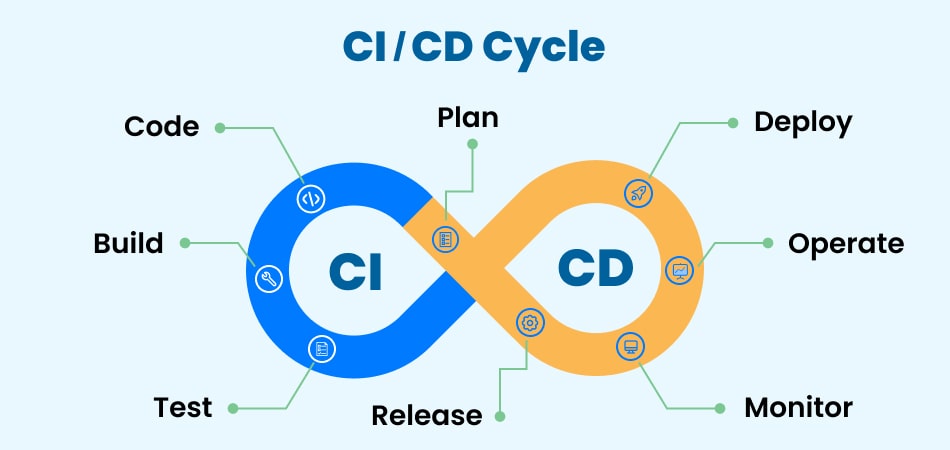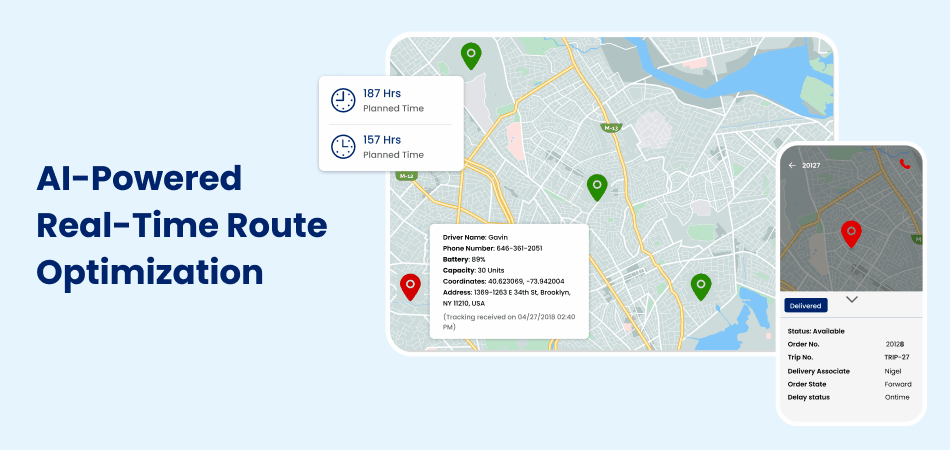Introduction
Today, the digital world is way more fast-paced than it used to be five years ago. Launching products, releasing updates and upgrades needs to be as fast. For this to happen, software delivery itself needs to be reliable, and Agile. That’s why there is more buzz than ever about Continuous Integration and Continuous Delivery/Deployment. CI/CD promises faster development cycles and improved quality of releases as well as the final product.
But is CI/CD necessary for every project? In this blog, we explore what CI/CD means, its benefits, and when it might—or might not—be the right fit.
Understanding CI/CD

CI/CD is a set of practices aimed at automating the software development lifecycle. It removes many manual steps and helps teams deliver software faster and more reliably. It has three essential elements.
-
Continuous Integration
Continuous Integration (CI) is the practice of merging code changes frequently into a shared repository. Every change is automatically built and tested. This approach helps developers catch issues early. It reduces integration problems that might occur when merging large chunks of code. With CI, bugs are detected quickly, and the codebase remains stable.
-
Continuous Delivery
Continuous Delivery (CD) builds on CI by ensuring that code can be released at any time. The software is kept in a deployable state throughout its lifecycle. Automated tests verify that changes meet quality standards. This gives teams the confidence to release updates more frequently. The focus is on making deployments predictable and low risk.
-
Continuous Deployment
Continuous Deployment takes automation one step further. Every change that passes automated tests is automatically deployed to production. There is no human intervention. This approach is ideal for projects that require rapid updates. It minimizes the time between writing code and delivering it to users. However, it demands robust testing and monitoring practices.
Benefits of Implementing CI/CD

Implementing CI/CD can transform the way software is delivered. Here are some of the primary benefits.
-
Reduced Manual Work
Automating builds and tests significantly cuts down on manual tasks. This reduces human errors and frees up developers to focus on high-value work. By streamlining repetitive processes, teams can work more efficiently and deliver faster.
-
Early Bug Detection
With continuous integration, issues are identified as soon as they are introduced. Automated tests catch errors early in the development process. Early bug detection prevents minor issues from escalating, thus saving time and reducing overall troubleshooting efforts.
-
Accelerated Release Cycles
With CI/CD, the process from code commit to production becomes seamless. Software updates can be rolled out more frequently. This agility gives businesses a competitive edge. Faster release cycles mean that new features and fixes reach users without delay.
-
Improved Collaboration
CI/CD encourages a culture of collaboration. Developers work in smaller, frequent increments. This promotes transparency and collective code ownership. When teams adopt CI/CD, silos break down. Everyone stays in sync with the project’s progress.
-
Efficient Use of Infrastructure
Automated testing and deployment ensure that resources are used optimally. Infrastructure, whether on-premise or cloud-based, can be managed more efficiently. This means less downtime and better performance. Continuous monitoring also highlights areas for optimization.
-
Reduced Downtime
Frequent and incremental updates help in minimizing service interruptions. With automated processes in place, rollbacks can happen swiftly if issues arise. Minimal-to-no downtime leads to better user experience and higher customer satisfaction.
-
Measurable Progress
CI/CD pipelines provide real-time insights into the development process. Teams can track performance metrics and progress with precision. This data-driven approach helps in fine-tuning both processes and product quality. Measurable progress builds confidence among stakeholders.
Is CI/CD Necessary for all Project Types?
One thing all project managers and product owners agree upon is that not all projects are built alike. This is why CI/CD may not be applicable to and profitable for every project. The decision to implement CI/CD should thus be based on several project-specific factors.
| Factor | Need for CI/CD | |
| Project Size & Complexity | Large, Complex
✅ |
Small, Simple
❌ |
| Team Size | Large
✅ |
Small
❌ |
| Release Frequency | Frequent Updates
✅ |
Infrequent Updates
❌ |
| Regulatory Compliance | Strict
✅ |
Minimal
❌ |
-
Project Size & Complexity
Large, complex projects benefit the most from CI/CD. In these scenarios, multiple teams work on different components simultaneously. Automating integration and deployment helps manage complexity. In contrast, smaller projects might not see as dramatic a return on investment.
-
Team Size
Team size and structure are crucial. In larger teams, the risk of integration conflicts is higher. CI/CD can help maintain code quality and team alignment. However, in small teams with fewer changes, manual processes might suffice initially.
-
Release Frequency
The need for frequent releases is a strong argument for CI/CD. Projects that need to update often—such as web applications or mobile apps—gain significantly from automation. In projects with infrequent updates, the overhead of CI/CD might outweigh its benefits.
-
Regulatory Compliance
Certain industries require strict compliance standards. CI/CD pipelines can be configured to include compliance checks. Automated tests can verify that code meets security and regulatory guidelines. For projects with heavy regulatory constraints, CI/CD adds an extra layer of assurance.
Cases where CI/CD May Be Less Critical
While CI/CD offers many benefits, it is not a one-size-fits-all solution. A few scenarios may not benefit much or at all from CI/CD.
-
Small, Static Projects
For small projects with limited changes, a full CI/CD pipeline might be overkill. When code rarely changes, the cost of maintaining a CI/CD process may not be justified. These projects can often rely on simpler testing and deployment methods.
-
Early-Stage Startups
Startups in the early stages might prioritize speed over process automation. With small teams and limited resources, establishing a full CI/CD pipeline might delay product development. In such cases, a lightweight approach to integration and delivery could be more practical. As the startup scales, revisiting CI/CD implementation can help manage growth effectively.
Before You Implement CI/CD
Before diving into CI/CD, it’s essential to weigh some critical factors that decide your readiness.
-
Existing Infrastructure
The current state of your development and deployment environment matters. If your infrastructure is modern and cloud-based, integrating CI/CD may be straightforward. Legacy systems might require significant changes before automation can be implemented.
-
Existing Processes
Understanding your existing workflows is vital. CI/CD is most effective when it enhances well-defined processes. If your team already follows agile methodologies, CI/CD might integrate seamlessly. Conversely, if processes are ad hoc or poorly documented, all initial efforts will need to focus on process improvement before CI/CD can be implemented.
-
Initial Setup Complexity
Setting up a CI/CD pipeline involves time and resources. There is an upfront cost in configuring tools and writing automation scripts. This initial setup can be complex. It is important to assess whether the long-term benefits justify the short-term investment.
-
Maintenance Overhead
CI/CD pipelines need ongoing maintenance. As tools evolve and project requirements change, pipelines must be updated. Teams should be prepared for regular tweaks and troubleshooting. Planning for this overhead is key to sustained success.
-
Tool Integration
The ecosystem of tools available for CI/CD is vast. Integration with version control, testing frameworks, and deployment tools is essential. Evaluate if the tools you choose can work together seamlessly. A well-integrated toolchain can reduce friction and streamline the entire process.
Case Studies: Cases where CI/CD has been Beneficial
-
Amazon: Innovation through Rapid, Automated Deployment

Amazon is a pioneer in leveraging CI/CD at a massive scale. The company deploys thousands of code changes daily across a sprawling microservices architecture. Each service has its own dedicated CI/CD pipeline that automates building, testing, and deployment. This allows teams to experiment and innovate rapidly while isolating failures to individual services.
- Automation is at the heart of Amazon’s deployment strategy
Extensive automated testing ensures that every code change meets high-quality standards before reaching production. Continuous monitoring and rapid rollback mechanisms further minimize the impact of any issues. This rigorous process has enabled Amazon to maintain reliability despite the high frequency of updates.
- Amazon’s infrastructure also supports these rapid cycles
By using containerization, serverless computing, and orchestration tools, the company can deploy new features with minimal downtime. This robust, automated ecosystem not only accelerates time-to-market but also reinforces Amazon’s commitment to operational excellence.
For Amazon, CI/CD is more than a process—it’s the backbone of continuous innovation.
-
HP: Transforming Legacy Systems with Modern CI/CD Practices

HP’s journey with CI/CD illustrates how traditional enterprises can reinvent their software delivery processes. Facing a mix of legacy systems and modern applications, HP integrated CI/CD practices to streamline workflows and boost overall efficiency. This transition has been crucial in modernizing their development lifecycle while maintaining stringent quality controls.
- HP implemented automated pipelines
With automated pipelines, HP bridged the gap between older systems and contemporary technologies. Automated testing within these pipelines catches defects early, which reduces downtime and enhances user satisfaction. By integrating version control, testing frameworks, and deployment tools into a unified toolchain, HP ensures consistent and reliable software releases.
- HP adopted continuous integration
The benefits of CI/CD at HP extend beyond technical improvements. Adopting continuous integration has fostered a culture of collaboration across diverse teams. Real-time insights from CI/CD pipelines help teams quickly address performance issues and refine their processes continuously. This integration has not only improved the speed of delivery but also ensured that HP meets regulatory and quality standards consistently.
HP’s transformation with CI/CD demonstrates that even large, established enterprises can achieve agility and innovation. By combining automated processes with careful oversight, HP has successfully modernized its operations, reduced manual overhead, and enhanced the overall quality of its software products.
Conclusion
CI/CD offers a powerful framework to automate and streamline software delivery. However, its necessity is not universal.
For large-scale, complex projects, CI/CD is almost indispensable. Automated pipelines keep codebases stable and speed up the feedback loop. In regulated environments, CI/CD adds compliance checks that are vital for security and performance. Industry giants like Amazon and HP have shown that the benefits of CI/CD can lead to remarkable operational improvements.
On the other hand, small, static projects or early-stage startups may find that the cost and complexity of CI/CD do not align with their immediate needs. In these cases, simpler processes may suffice until the project grows in scope or complexity.
Ultimately, CI/CD should be viewed as a tool—a powerful one—that must be adapted to the specific needs of each project. It is not a magic bullet. The decision to implement CI/CD should be driven by factors such as project size, team dynamics, release frequency, and regulatory requirements.
By understanding the nuances of CI/CD, organizations can make informed decisions that best fit their workflows and goals. Whether you are managing a vast microservices architecture or a small, monolithic application, consider the benefits, challenges, and long-term impacts of integrating CI/CD into your development process. Embrace automation where it makes sense, but remember that every project is unique.
If you are looking at the potential of CI/CD in managing your project, our team of product consultants can help you make a sound decision. Let’s get in touch.



